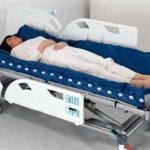Hospital Bed Size in Feet: A Comprehensive Overview
Hospital beds are specialized beds designed for patients receiving healthcare. They are distinct from conventional beds in their adjustability, safety features, and overall focus on patient comfort and clinical needs. Understanding the dimensions of hospital beds is crucial, not only to hospitals and healthcare facilities, but also for individuals considering home healthcare setups. This article provides an in-depth exploration of hospital bed sizes in feet, covering various types, key considerations, and relevant factors that influence these dimensions.
The size of a hospital bed is a critical factor influencing patient safety, comfort, and the efficiency of care delivery. An inappropriately sized bed can lead to discomfort, pressure sores, falls, and even hinder the ability of healthcare providers to administer necessary treatments. Conversely, a well-chosen bed size can significantly improve patient outcomes and the quality of care provided.
Hospital beds come in various sizes, each designed to cater to specific patient needs and medical conditions. The dimensions are typically expressed in inches and feet, and it is essential to understand these measurements to make informed decisions regarding bed selection. The standard sizes are commonly referred to as standard, bariatric, and low beds, each having distinct dimensional characteristics. The following sections will delve into these different types of hospital beds and their respective sizes in feet.
Standard Hospital Bed Dimensions
A standard hospital bed is the most common type used in healthcare settings. It is designed to accommodate a wide range of patients and medical conditions. While there can be slight variations between manufacturers, the typical dimensions of a standard hospital bed are approximately 36 inches wide and 80 inches long. Translated into feet, this equates to 3 feet wide and 6 feet 8 inches long. This size is suitable for the majority of adult patients and provides sufficient space for comfort and movement.
The height of a standard hospital bed is also adjustable, allowing healthcare providers to position the bed at a comfortable working level. The adjustable height range typically varies between 18 and 30 inches. This feature is crucial for facilitating patient transfers, providing medical care, and preventing caregiver strain. The adjustability aspect also aids in achieving the correct patient positioning for various treatments and monitoring procedures.
The interior dimensions of the bed frame are a critical factor for patients needing specialized mattresses such as pressure-relieving mattresses. Care must be taken to ensure that the mattress size is compatible with the interior dimensions of the bed frame. An ill-fitting mattress could compromise its effectiveness and potentially create safety hazards. The standard hospital bed dimensions provide a baseline for comparing against other specialized bed types.
Bariatric Hospital Bed Dimensions
Bariatric hospital beds are specifically designed to accommodate larger patients, typically those who are significantly overweight or obese. These beds are wider and sturdier than standard hospital beds to provide adequate support and comfort. The typical width of a bariatric hospital bed ranges from 42 to 48 inches, or 3.5 to 4 feet. The length of a bariatric bed is generally similar to the standard bed, around 80 inches or 6 feet 8 inches.
The increased width of a bariatric bed is essential for providing adequate space for larger patients and preventing pressure sores. Pressure sores are a common complication for obese patients due to reduced mobility and increased pressure on bony prominences. The wider bed surface allows for better weight distribution and reduces the risk of skin breakdown. The weight capacity of bariatric beds is also significantly higher than standard beds, typically ranging from 500 to 1000 pounds or more.
In addition to wider dimensions, bariatric beds often feature reinforced frames, stronger motors for height adjustability, and specialized mattresses designed to support the patient's weight. These beds are often equipped with wider side rails for added safety and fall prevention. When selecting a bariatric bed, it is vital to consider the patient's specific weight, height, and mobility needs. The surrounding room dimensions also need to be considered, as the larger footprint of these beds may require rearranging furniture or modifying the space to ensure safe maneuverability for both the patient and caregivers. The increased size also necessitates stronger casters for easier movement.
Low Hospital Bed Dimensions
Low hospital beds are designed to minimize the risk of falls, particularly for patients who are elderly, frail, or have conditions that affect their balance or mobility. These beds have a lower minimum height than standard hospital beds, typically ranging from 9 to 12 inches from the floor in their lowest position. The width and length of low beds are generally similar to standard hospital beds, approximately 36 inches (3 feet) wide and 80 inches (6 feet 8 inches) long.
The primary benefit of a low bed is its reduced height. This significantly decreases the distance a patient would fall if they were to get out of bed unassisted, thus minimizing the risk of serious injury. Low beds are often used in nursing homes, assisted living facilities, and for home healthcare setups where fall prevention is a major concern. While the width and length are similar to standard beds, the reduced height is the key differentiator.
Some low beds also offer adjustable height features, allowing caregivers to raise the bed to a more comfortable working level when providing care. This versatility makes low beds suitable for a wide range of patients and care settings. Features like integrated side rails, pressure-relieving mattresses, and easy-to-use controls enhance their functionality. The selection of a low bed should be based on an individual assessment of the patient's fall risk, mobility limitations, and overall healthcare needs. Regular monitoring of the patient's condition is also essential to ensure that the low bed continues to meet their needs effectively.
Beyond these primary classifications, other types of hospital beds exist, each tailored for specific clinical requirements. Examples include trendelenburg beds, which can tilt the entire bed surface to facilitate certain medical procedures or treatments, and specialty beds for burn victims that minimize pressure and prevent skin breakdown. Furthermore, pediatric hospital beds are smaller in dimensions to accommodate children. These beds are frequently equipped with safety features like enclosed sides to prevent falls. The dimensions of pediatric beds vary depending on the age and size of the child.
When choosing a hospital bed, it is imperative to consider several factors to ensure patient safety, comfort, and efficient care delivery. The patient's weight, height, mobility limitations, and medical condition are primary considerations. The size of the room where the bed will be placed is also crucial. A bed that is too large can make it difficult for caregivers to navigate around the patient and may pose safety hazards. Manufacturers' specifications should always be consulted to determine the safe working load and the minimum height and width requirements for the bed.
The selection of the right mattress is also an integral part of the process. Pressure-relieving mattresses are designed to minimize pressure on bony prominences and reduce the risk of pressure sores. These mattresses come in various materials, including foam, gel, and air. The choice of mattress material should be based on the patient's individual needs and risk factors. Proper infection control and hygiene practices are essential to prevent the spread of infections in healthcare settings. Hospital beds should be cleaned and disinfected regularly, and linens should be changed frequently.
Hospital beds are an essential component of modern healthcare, providing a safe and comfortable environment for patients receiving treatment. Understanding the various types and sizes of hospital beds is crucial for healthcare providers, caregivers, and individuals considering home healthcare setups. By carefully considering the patient's needs, the room dimensions, and the available features, one can select the most appropriate hospital bed to promote healing, comfort, and safety.

Articulated Hospital Bed For Common Care

Hospital Bed Manufacturer Suppliers Standard Beds Manufacturers

Operating Type Automation Grade Manual Hospital General Ward Bed Size Dimension 6x4x3 Feet Lxwxh At 4800 Piece In Muzaffarpur

Manufacturer Directly Supply 2 Cranks Manual Patient Medical Bed For Hospital Furniture Made In China Com

Hospital Bed Mattress Sizes Listed Every Size

Operating Type Automation Grade Manual Hospital Fowler Bed Size Dimension 2030 X 900 500 Mm At 14500 Piece In New Delhi

Pmps Iron Manual Hospital Bed In India At Flipkart Com

Icu Beds Electrical Manufacturer Suppliers Hospital Bed Mechanical Critical Care Electric

White Hospital Patient Bed Size 72x36x24 At 3800 Piece In Ambala Id 4114785791

Medplus Se Semi Electric Homecare Bed








